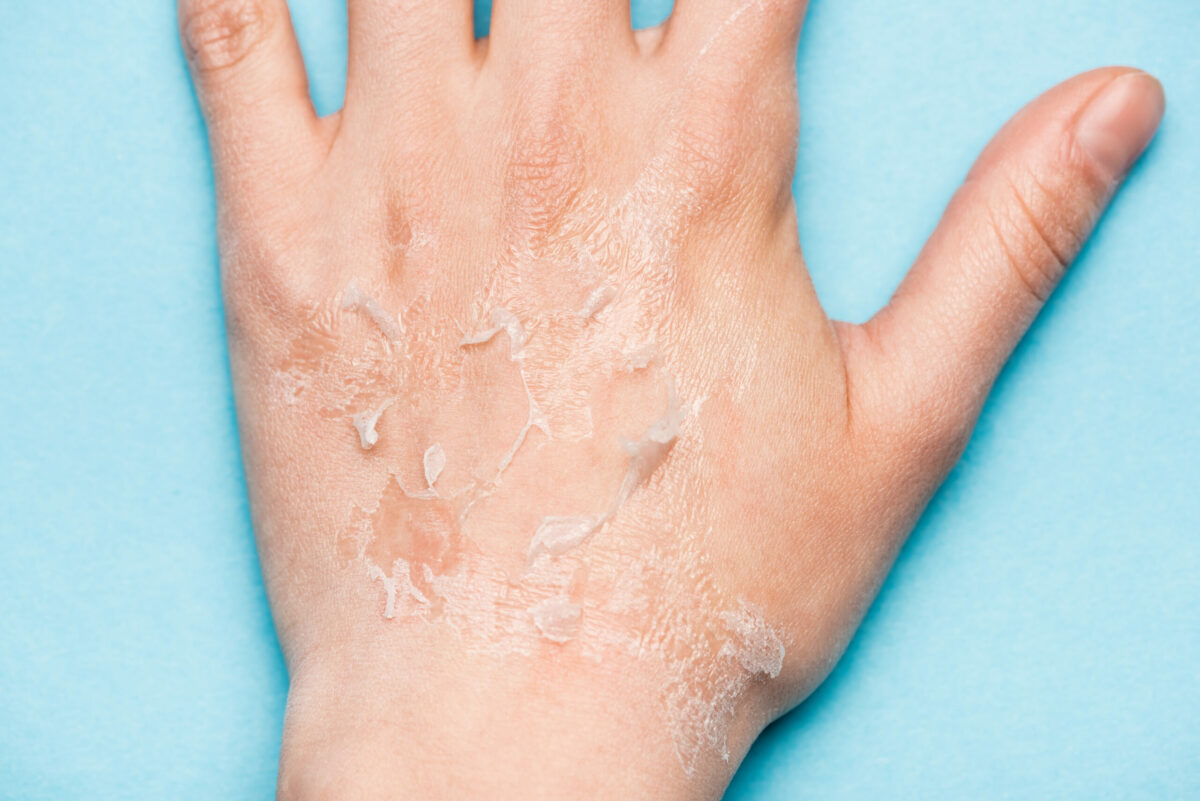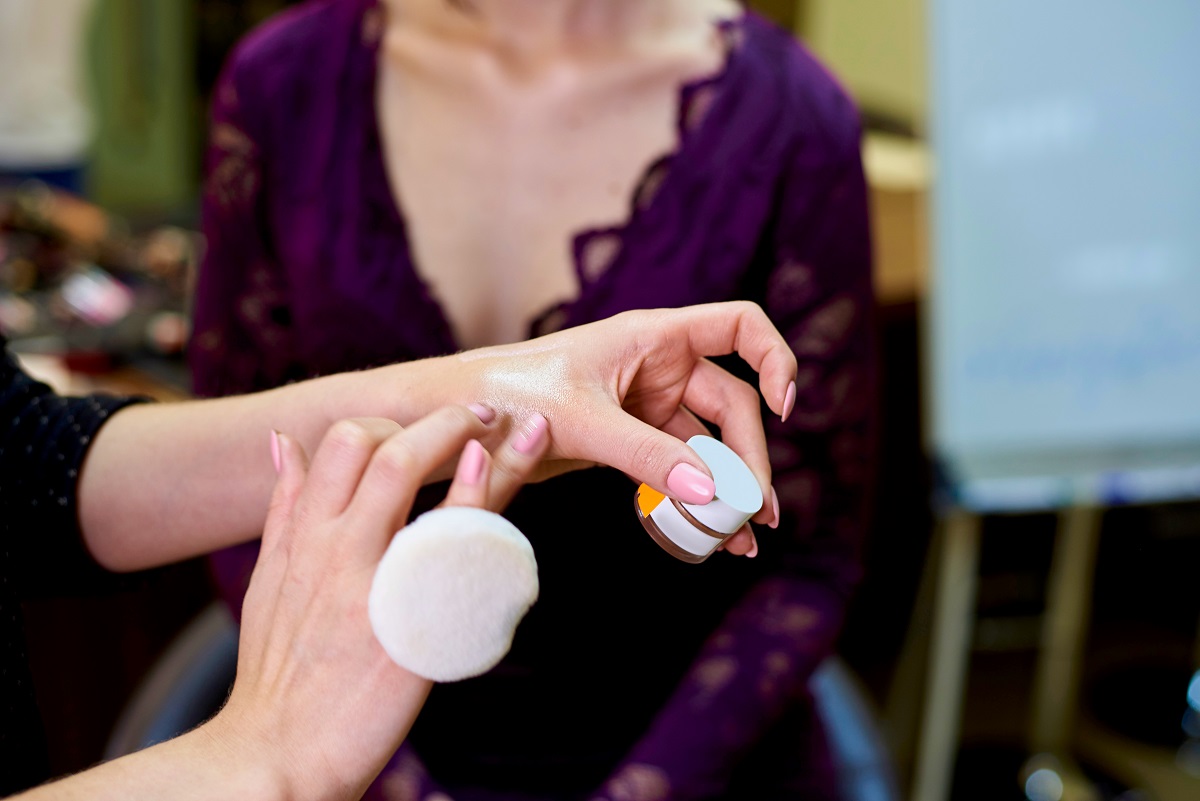A rare skin condition in which the skin becomes fragile and blistering is called epidermolysis bullosa. However, the blisters can appear even due to minor injuries, heat, rubbing, or scratching. Furthermore, people with a severe form of epidermolysis bullosa may experience blisters inside the body (including the mouth and stomach lining).
This is an inherited condition that commonly appears in infants or young children. Sometimes, symptoms do not appear until teen years or early adulthood. In any case, there is no way to cure the condition but mild forms may improve with age. The treatment goal is to lessen the symptoms and prevent blisters from recurring.
Symptoms
People with this condition may experience the following symptoms. For example:
- Fragile skin that easily blisters (especially on the feet and palms)
- Thick and unformed nails
- Blisters inside the body (such as throat or mouth)
- Scalp blistering and scarring alopecia (permanent hair loss)
- Thinning of the skin
- Small pimple-like bumps
- Dental issues (such as tooth decay)
- Swallowing problems
- Itchy and painful skin
While the condition may not cause symptoms during infancy, it may appear when a toddler begins to walk or when an older child starts new activities.
It is advised to see a doctor right away if your child develops blisters without any obvious reason. Moreover, severe blistering may be life-threatening for infants. Seek emergency care if your child has breathing or swallowing problems or infection symptoms (including swollen skin, pus, fever, and others).
Causes
This condition is caused by an abnormal gene that passes from biological parents to their children. Epidermolysis bullosa can pass from one parent with the disease (autosomal dominant inheritance) or from both parents (autosomal recessive inheritance).
The skin is made of the epidermis (an outer layer) and dermis (the underlying layer) and the area where these layers meet is called the basement membrane. Healthcare professionals divide this condition into different types depending on which layers separate and form blisters. Check below epidermolysis bullosa types:
- Epidermolysis bullosa simplex – It is the most common type of this condition and affects the outer layer of the skin. Commonly, it occurs in palms and feet and blisters heal without forming scar tissue.
- Junctional epidermolysis bullosa – This type may be quite serious because blisters can appear in infancy. Moreover, babies may develop a hoarse-sounding cry caused by persistent blistering and scarring of the vocal cords.
- Dystrophic epidermolysis bullosa – This type happens due to an abnormal gene that makes a protein that glues layers of the skin together. However, if this protein does not work or is missing the skin layers cannot join properly.
- Kindler syndrome – This epidermolysis bullosa type may cause blisters in different layers, which make the skin look different among people. The symptoms usually appear in infancy or early childhood. Kindler syndrome also increases sun sensitivity, which causes the skin to look thin, mottled, or wrinkly.
In addition, one major risk factor for developing this skin disease is a family history of the condition.
Complications
In some cases, this condition may worsen even with treatment. However, it is important to seek medical care as soon as possible if any of the following complications occur. Examples include:
- Infection – Skin blisters may allow bacteria to enter and cause infections.
- Bloodstream infection – If bacteria from an infection enters the bloodstream and spreads throughout the body it may cause sepsis. This condition may spread quite fast and cause shock and organ failure.
- Fingers fusion and joint changes – People with a severe form of epidermolysis bullosa may notice that fingers or toes bind together and cause contractures (bending of the joints). As a result, it may negatively affect the function of elbows, knees, and fingers.
- Malnutrition – If the blisters occur in the mouth or throat it may cause eating problems. As a result, it may cause nutrition problems. People with malnutrition may develop anemia, reduced iron levels in the blood, delayed growth (in children), and other health problems.
- Constipation – However, blisters caused by this condition may occur in the anal region. As a result, passing stool may become difficult. However, constipation also may occur due to not drinking enough fluids or eating foods (such as fresh fruits and vegetables).
- Dental issues – People with mouth blisters may experience dental problems (such as tooth decay).
- Skin cancer – There are some epidermolysis bullosa types that significantly increase the risk of developing squamous cell carcinoma (a type of skin cancer).
- Death – Babies with severe junctional epidermolysis bullosa are at increased risk of infections and loss of body fluids. Moreover, blisters in the throat and mouth may make it challenging to breathe. Unfortunately, many infants with severe junctional epidermolysis bullosa do not survive.
How to Prevent Epidermolysis Bullosa?
While there are no ways to prevent the condition, the following tips may help reduce the symptoms and prevent infections. Examples include:
- Handle your child gently by using a soft material and give support under the buttocks and behind the neck. It is not advised to take the child from under the arms only.
- You should take special care with the diaper area
- It is recommended to keep the room temperature steady and cool
- Apply moisturized whenever needed during the day
- Dress the child in soft clothes
- One way to prevent scratching is to trim the fingernails regularly
Diagnosis
Sometimes, healthcare providers diagnose this condition by performing a physical examination only. However, in some cases, you may need to perform some tests to confirm the condition. For example:
- Biopsy for immunofluorescence mapping – This is a procedure that involves a small sample of the affected skin or mucous membrane that is examined under a microscope. During this test, doctors may determine which skin layer is involved and which proteins are needed for skin growth.
- Genetic testing – It involves a blood sample sent to the laboratory for DNA analysis.
- Prenatal testing – If you have a family history of epidermolysis bullosa, your doctor may perform prenatal tests and genetic counseling.
Treatment
Physicians usually recommend lifestyle changes and home care for people with this skin disease. If previous methods do not help, you may need medicines, surgery, or other procedures. Check below some treatments:
Medications
Physicians usually recommend pain relievers and medicines to control itching. Sometimes, doctors may prescribe antibiotics if there are infection symptoms (such as weakness, fever, and others).
Surgery
Check below some examples:
- Esophagus widening – This is a procedure used to widen the esophagus (the tube that carries food from the mouth to the stomach). However, scarring and blistering of the esophagus may cause it to narrow, which causes eating problems.
- Gastrostomy tube – This is a special tube that delivers food directly to the stomach. It helps people improve nutrition and helps with weight gain.
- Grafting skin – This procedure is recommended by doctors when scar tissue negatively affects hand function.
- Movement restores – This surgery is often used in people whose condition restricts movement.
Frequently Asked Questions
What is the life expectancy in people with epidermolysis bullosa?
People with a severe form of epidermolysis bullosa often live up to 35 years old. For more details, discuss it with your healthcare professional.
Can epidermolysis bullosa be cured?
It is not possible to cure the condition but with proper treatment, you can control the symptoms and prevent complications.
How common is epidermolysis bullosa?
Approximately 500,000 people suffer from this condition in the entire world. Therefore, it is considered a rare condition, and some of its subtypes are considered very rare. If you have additional questions, ask your healthcare professional.




